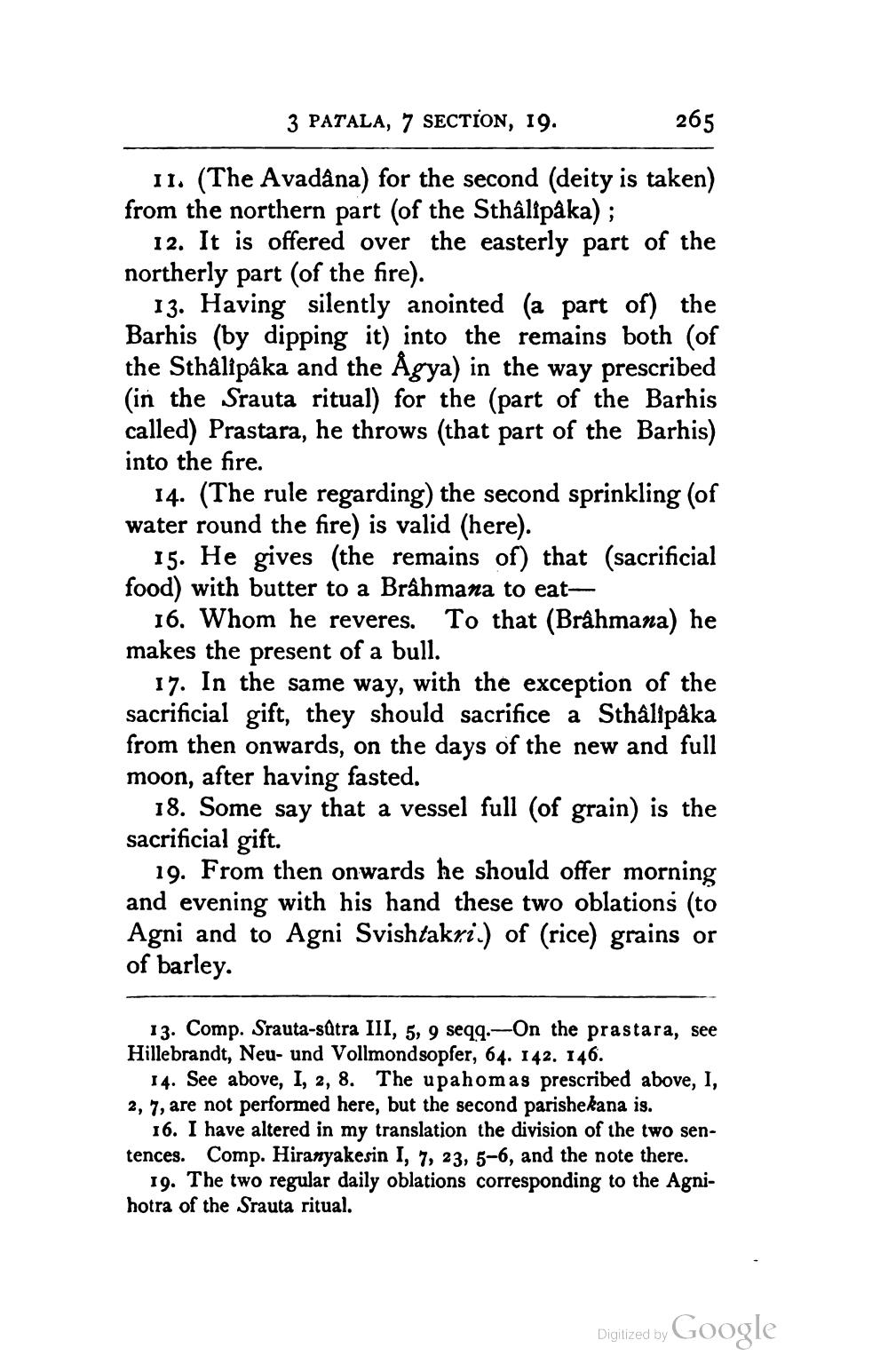________________
3 PATALA, 7 SECTION, 19.
265
11. (The Avadana) for the second (deity is taken) from the northern part (of the Sthâlipäka);
12. It is offered over the easterly part of the northerly part (of the fire).
13. Having silently anointed (a part of) the Barhis (by dipping it) into the remains both (of the Sthâlipaka and the Ågya) in the way prescribed
in the Srauta ritual) for the (part of the Barhis called) Prastara, he throws (that part of the Barhis) into the fire.
14. (The rule regarding) the second sprinkling (of water round the fire) is valid (here).
15. He gives (the remains of) that (sacrificial food) with butter to a Brahmana to eat
16. Whom he reveres. To that (Brâhmana) he makes the present of a bull.
17. In the same way, with the exception of the sacrificial gift, they should sacrifice a Sthalipaka from then onwards, on the days of the new and full moon, after having fasted.
18. Some say that a vessel full (of grain) is the sacrificial gift.
19. From then onwards he should offer morning and evening with his hand these two oblations (to Agni and to Agni Svishtakri.) of (rice) grains or of barley.
13. Comp. Srauta-sätra III, 5, 9 seqq.--On the prastara, see Hillebrandt, Neu- und Vollmondsopfer, 64. 142. 146.
14. See above, I, 2, 8. The upahomas prescribed above, I, 2, 7, are not performed here, but the second parishekana is.
16. I have altered in my translation the division of the two sentences. Comp. Hiranyakesin I, 7, 23, 5-6, and the note there.
19. The two regular daily oblations corresponding to the Agnihotra of the Srauta ritual.
Digilized by Google




